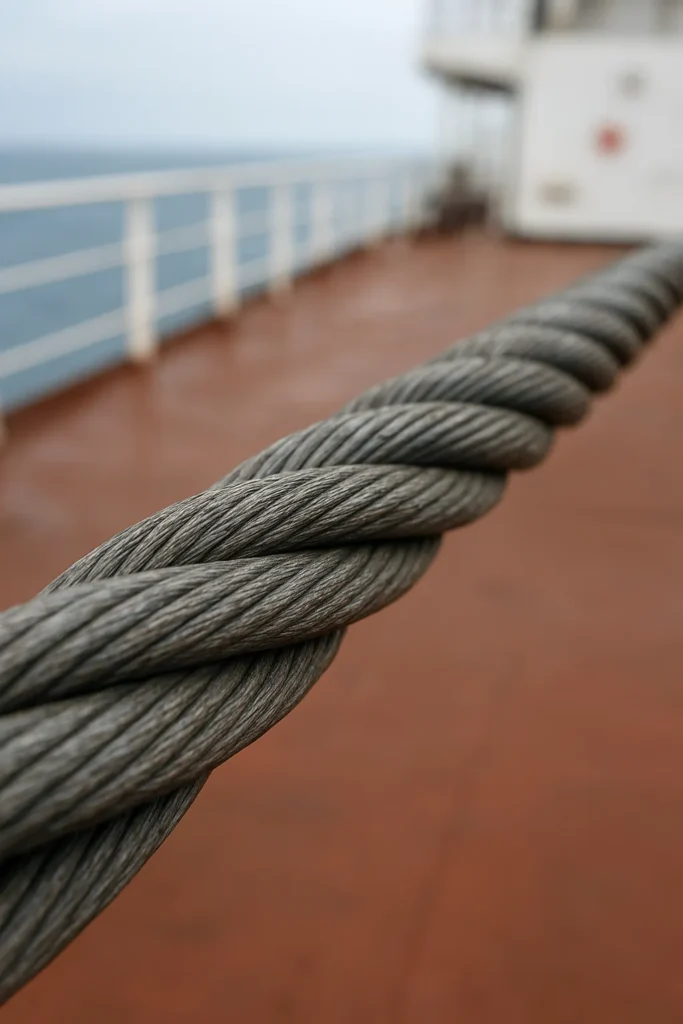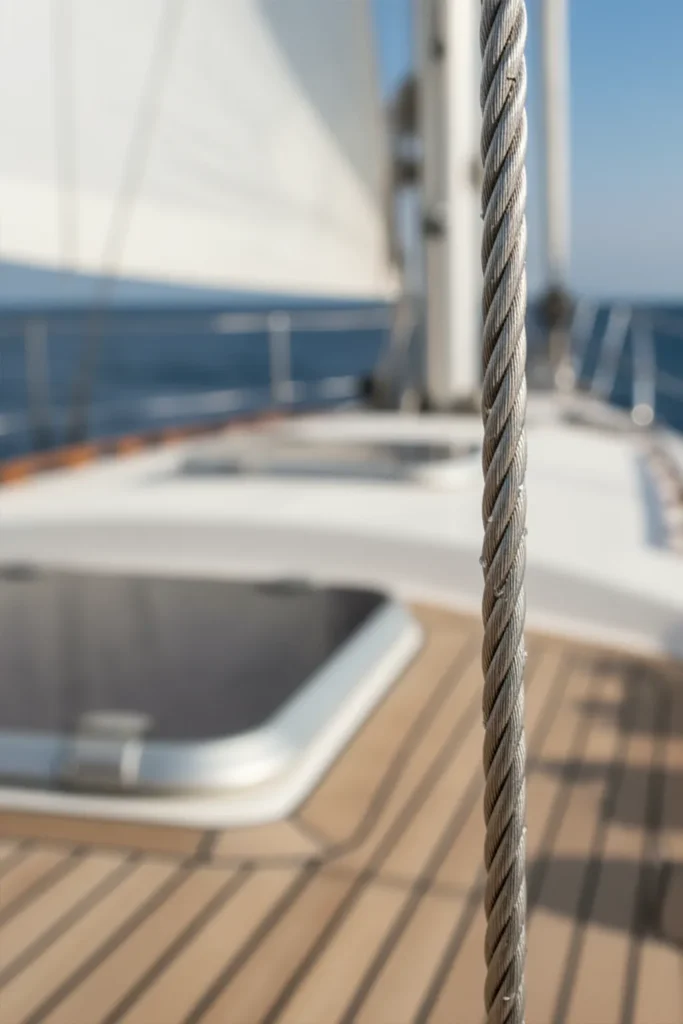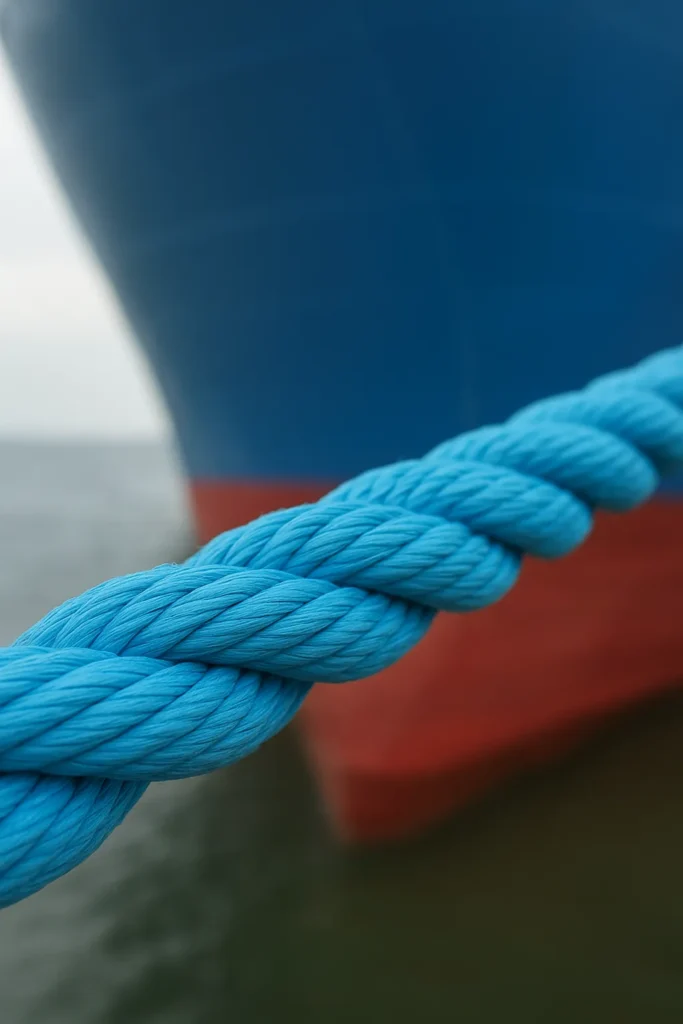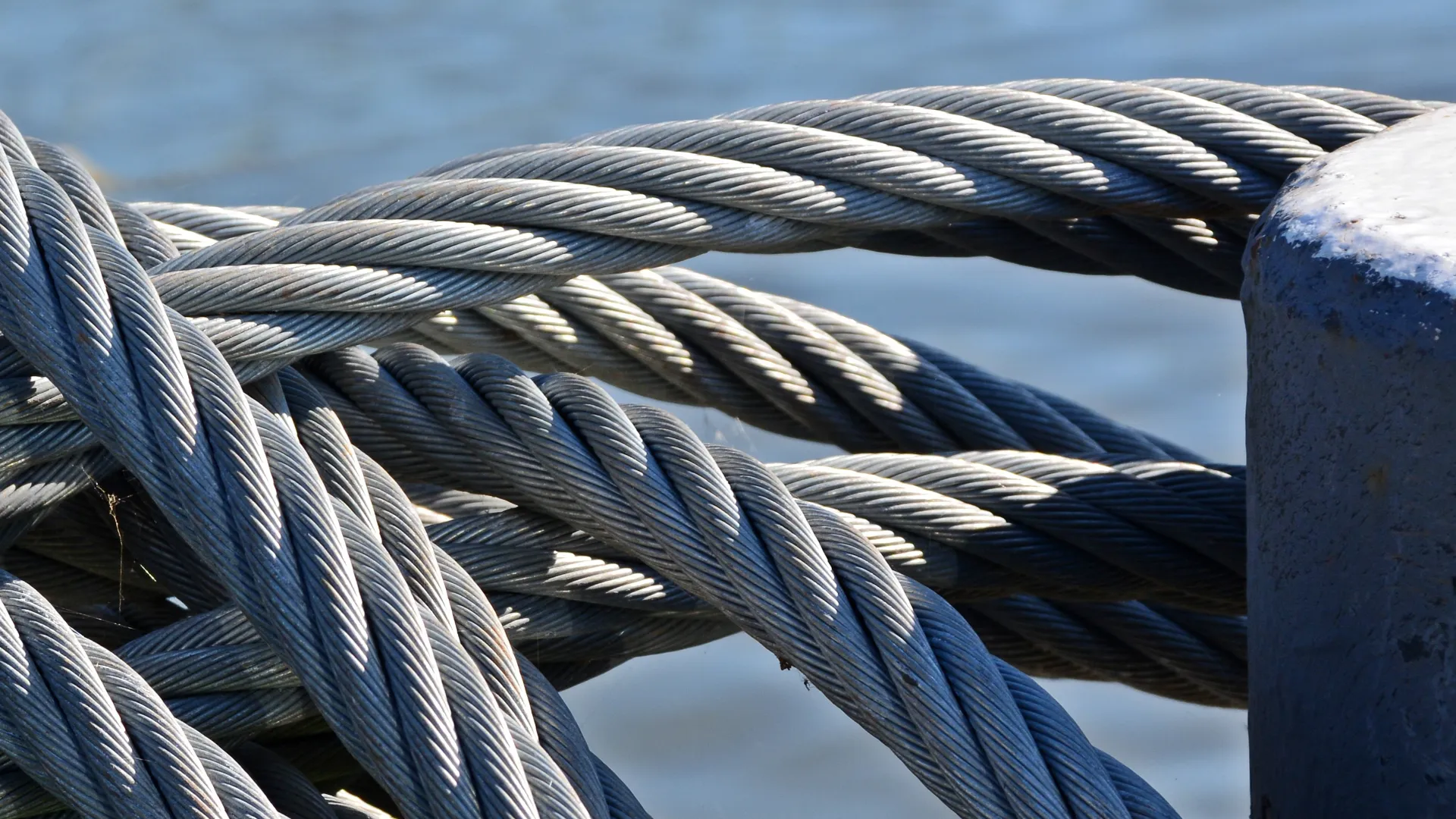In the maritime and industrial sectors, safety and efficiency hinge on the quality of equipment. Among the most crucial components are high-performance ropes. At Alfa Marine Onboard, we ensure that every operation, from vessel mooring to heavy cargo handling, is secure and reliable.
Our extensive range of wire ropes and mooring ropes is designed to withstand the demanding conditions of the marine environment. Selecting the right rope for the job is essential, as each type (be it standard steel, corrosion-resistant stainless steel, or versatile mooring rope) is engineered for specific performance parameters.
Main Applications of Marine Ropes: A Comparative Table
To help you navigate our offering of marine ropes, we have compiled a summary of the main applications and key characteristics of our three primary rope categories: Steel Wire Ropes, Stainless Steel Wire Ropes, and Mooring Ropes.
| Rope Type | Material / Construction | Key Features | Typical Applications |
| Steel Wire Ropes | Carbon steel wires; diameters from ~2 mm to ~120 mm; many strand/rope constructions (e.g., 1×7, 1×19 etc); various core types (natural organic, synthetic, steel) | Very high strength, durability, wide selection of configurations, designed for heavy load, long service life | Lifting gear, heavy-duty anchoring, cargo handling, industrial winches |
| Stainless Steel Wire Ropes | High grade stainless steel (e.g., 1.4401/AISI 316 and higher), available in the same diameter range, various strand constructions, core types | Excellent corrosion resistance (especially in marine/wet/harsh environments), good strength, suitable for specialised usage | Marine rigging, ship superstructure, decks, exposed environments where corrosion must be minimised |
| Mooring Ropes (Synthetic/Natural) | Synthetic and natural fibre ropes: polypropylene, braided PP multifilament, polyolefin with polyester, polyamide, HMPE (e.g., Dyneema®) | Lightweight (for synthetics), excellent flexibility, UV resistance, chemical resistance, high performance variants (HMPE) | Vessel mooring lines, yacht mooring, offshore mooring, floating operations, general maritime applications |
Detailed Look at Rope Categories
1. Steel Wire Ropes
Our steel wire ropes are the workhorse of industrial and marine operations. Meticulously crafted with various strand constructions and core types (NFC, SFC, WSC), they are built for reliability and strength across a nominal diameter range of 2 mm to 120 mm. Whether you are dealing with challenging lifting operations or securing cargo, these ropes meet stringent compliance standards, including the Machinery Directive 2006/42/EC.
2. Stainless Steel Wire Ropes
When corrosion resistance is paramount, stainless steel is the superior choice. Manufactured from high-grade stainless steel (commonly WDI PYTHON’s 1.4401 / AISI 316), these ropes maintain their strength and integrity even when continuously exposed to saltwater, chemicals, or abrasive weather conditions. We also supply ropes in higher grades (e.g., 1.4436) and non-rotating designs for highly specialized applications.
3. Mooring Ropes
The category of mooring ropes offers the greatest diversity in material, designed to tailor performance to specific needs.
- For applications requiring a lightweight, floating line (like water sports or quick marine operations), Polypropylene Ropes are perfect.
- Braided PP Multifilament Ropes and Polyolefin with Polyester Ropes provide a balance of durability, softness, and UV resistance for general mooring.
- For maximum strength combined with ultra-lightness, Dyneema® Ropes (HMPE) are ideal, often replacing steel wire in critical, heavy-duty lifting applications.



Why the Right Rope Matters
- Safety & reliability: In marine or industrial settings, rope failures can mean downtime, damage or safety incidents. Using the correct construction, material and core for the task is vital.
- Environment matters: Marine environments impose corrosion, UV exposure, constant loading/unloading, abrasion by water and ice. The choice between carbon steel, stainless steel or synthetic rope depends heavily on these factors.
- Load and duty profile: The diameter, construction (strand count, lay type), core type, and termination (eye, socket, spliced loop etc) all affect how the rope behaves under load. In the case of steel wire ropes, for instance, catalogues list lay directions, finishes, tensile strengths and more.
- Maintenance and lifecycle cost: A rope that costs a bit more upfront but has significantly better corrosion resistance or strength can pay off in reduced maintenance, fewer replacements, and improved operational uptime.
Conclusion
Choosing the optimal rope is a critical decision that impacts safety and operational longevity. At Alfa Marine Onboard, our commitment is to provide premium marine equipment supported by unparalleled customer service. If you are uncertain about the appropriate rope for your vessel or equipment, our technical advisors possess comprehensive knowledge and are ready to provide tailored analyses and recommendations.
For a comprehensive range of marine ropes, explore our full offerings.
Contact us today to explore our full range of high-performance mooring and wire ropes.
